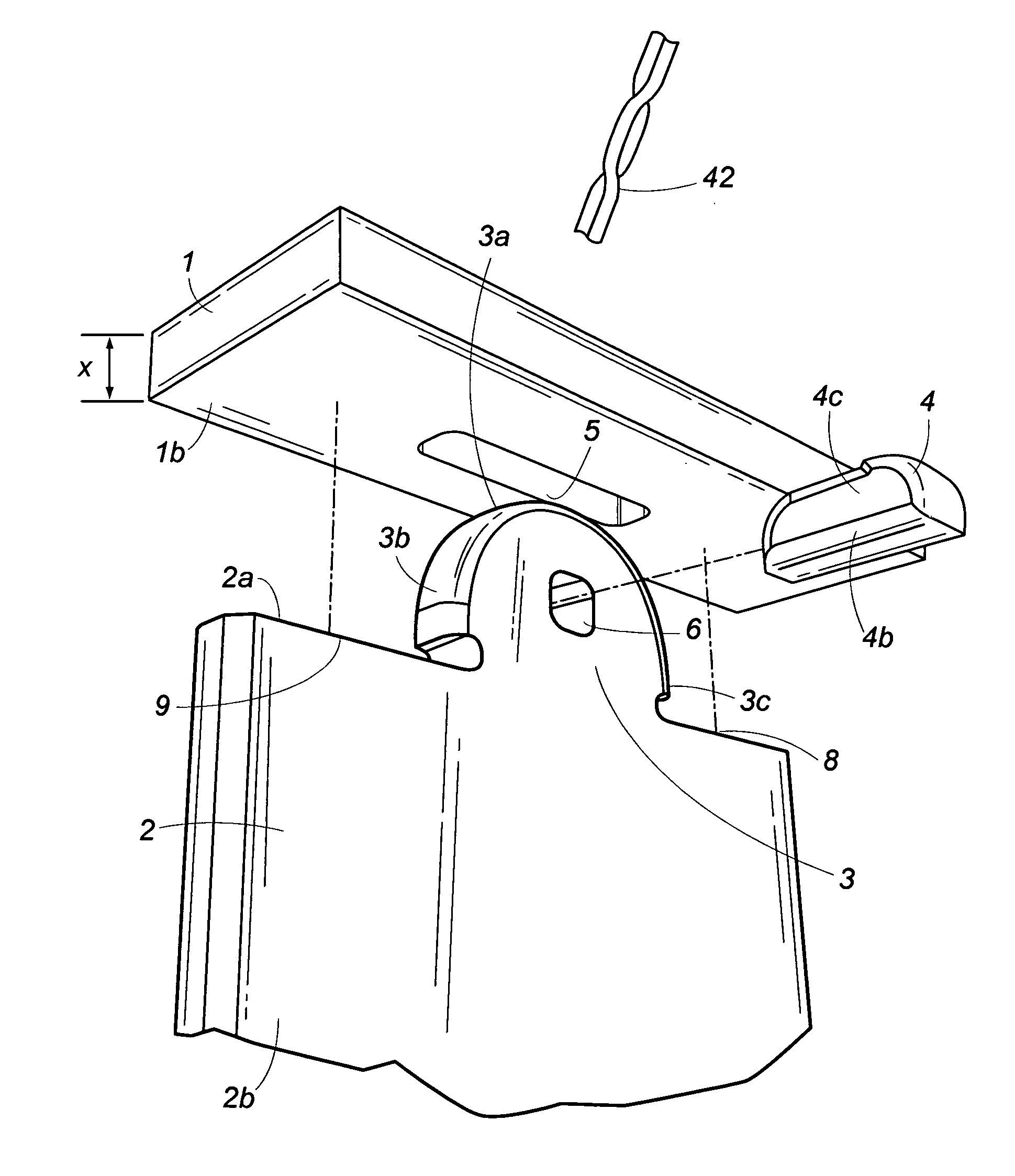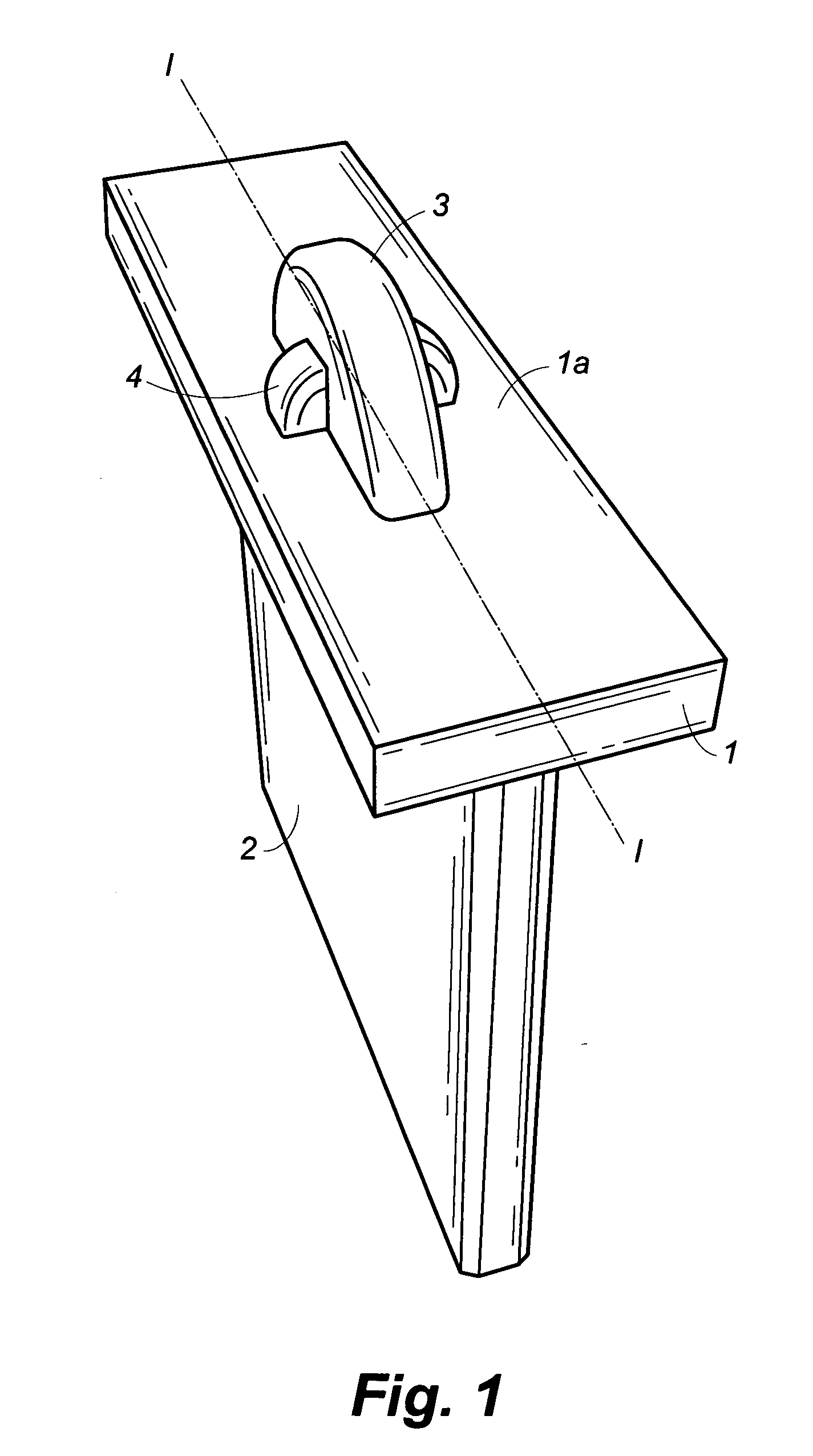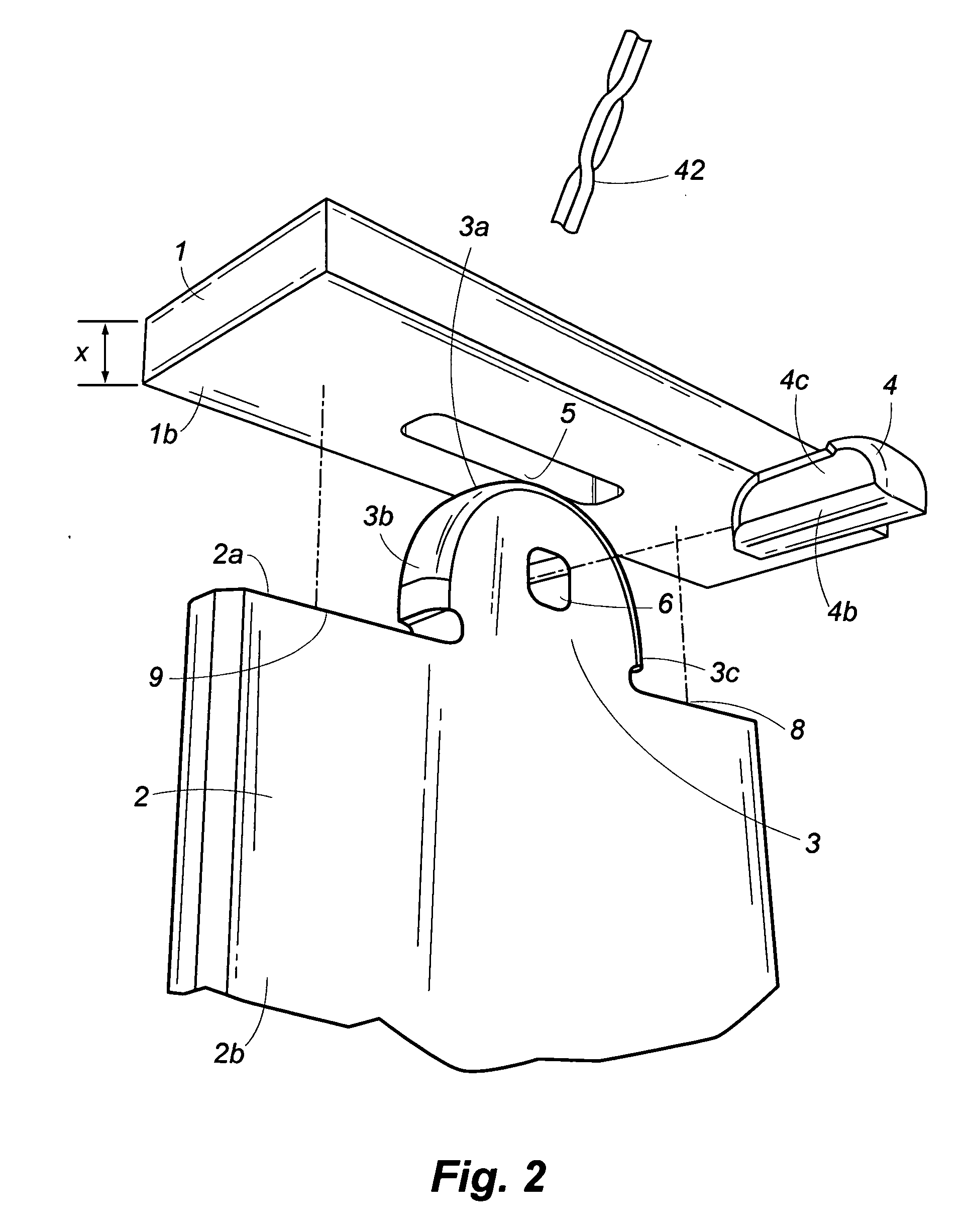Method for forming a mortise and tenon for tool free joinder, and joint assembled therefrom
a technology which is applied in the field of mortise and tenon joints, can solve problems such as the risk of different physical characteristics, and achieve the effect of preventing damage to components
- Summary
- Abstract
- Description
- Claims
- Application Information
AI Technical Summary
Benefits of technology
Problems solved by technology
Method used
Image
Examples
Embodiment Construction
[0034]In accordance with the subject invention, FIG. 1 shows one embodiment of the present invention in which the mortise and tenon joint of the instant invention are shown in assembled form, such that two members are joined together. In particular, first member 1 includes a top 1a and bottom 1b (shown in FIG. 2). Second member 2 includes tenon 3 at the top of second member 2, such that tenon 3 extends upwardly through the bottom of first member 1 through an aperture (or mortise) in first member 1. Locking peg 4 is then inserted horizontally through an aperture (or mortise) in the top portion of tenon 3.
[0035]As shown in FIGS. 2-3, mortise 5 is shown as the preferred rectilinear configuration through member 1, such that mortise 5 extends through top 1a (as shown in FIG. 1) and bottom 1b of first member 1 forming an aperture that comprises the mortise. It should be appreciated that all cuts shown, save the rounding of the surfaces of tenon 3, are created by the same bit 42.
[0036]Seco...
PUM
 Login to View More
Login to View More Abstract
Description
Claims
Application Information
 Login to View More
Login to View More - R&D
- Intellectual Property
- Life Sciences
- Materials
- Tech Scout
- Unparalleled Data Quality
- Higher Quality Content
- 60% Fewer Hallucinations
Browse by: Latest US Patents, China's latest patents, Technical Efficacy Thesaurus, Application Domain, Technology Topic, Popular Technical Reports.
© 2025 PatSnap. All rights reserved.Legal|Privacy policy|Modern Slavery Act Transparency Statement|Sitemap|About US| Contact US: help@patsnap.com



